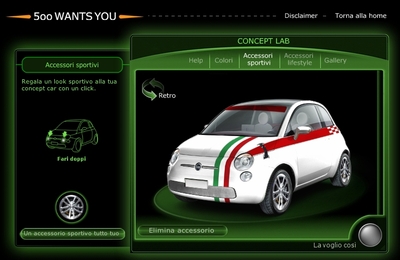
Asa Dotzler from Mozilla has written a nice post celebrating the achievements of student teams from the Creating Infectious Action (CIA) class I’ve been co-teaching this quarter at the Stanford d.school. Here’s a nice excerpt:
After some initial brainstorming with Diego in March and an afternoon in April talking to the CIA class, we saw the first round
of work the student teams put together. At that time, there were about
six projects and each one had something really cool going on. I
especially liked the Faith Browser project because they took the
challenge of reaching a niche audience with Firefox extensions —
something I think we should do a lot more of.
The class has moved to other CIA assignments but many of the student
teams continue to iterate on their approaches to creating infectious
action around Firefox — and some have even launched entirely new
efforts.
What’s really exciting to me about all of this is how these small
teams (just a few people each) were able to come up with novel ways to
create attention and action around Firefox quickly put those plans into
action. That a dozen projects were designed and put into the wild —
generating thousands of Firefox downloads, in just a couple of weeks
time should be a huge motivator to all of us.
Mind you, this Firefox work was done in just two weeks by six teams with four students each. And these are Stanford graduate students from the schools of business, engineering, education, and humantities, so they each have three or four other classes assigning work. And the teams had to start with scratch — all they were given was the goal of "find a way to spread Firefox to audiences not currently consuming it". They had to start with ethnographic research to understand why people don’t use things like Firefox even though they’re better and cheaper (read: free) than any alternatives. Then they formulated ideas of what could spread and how to spread and then and went, as we like to say in CIA, and "prototyped ’til they puked".
I’m so proud to be associated with this group of people!
What I love about this class is that it isn’t school, if school is a state of mind where everything is theoretical and abstract, up to and including the "real world". If anything, being in class felt like being the front lines of any "work" project I’ve ever been associated with. The downside of that classroom environment is that, as I heard loud and clear from students last week, it’s difficult to provide crisp and clear performance feedback. The upside is that CIA is a weekly reminder that none of us are really able to "know it when we see it". While we did spend time in class discussing formal theories of how memes diffuse through populations, those formal theories couldn’t tell us which, if any, of the Spread Firefox projects would hit it big. As it turns out, Firefoxies has been generating an order of magnitude more downloads than any of the other solutions. FaithBrowser, a very, very clever solution which I would have said was going to blow everything else out of the water, hasn’t hit volume yet. But it could well do so — all of these projects, I believe, are following different S-curves.
The point is, you’ve got to build it before you see if they’ll come. And if they don’t, you can keep on building…




